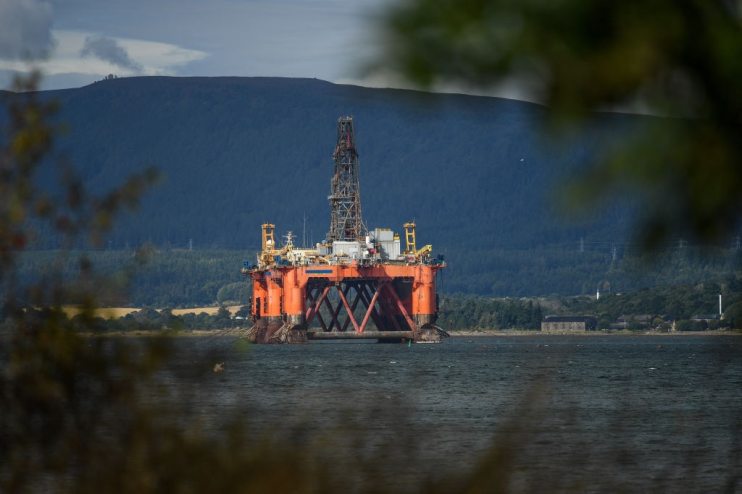Oil: Market rally drums up hopes of $100 prices amid tightening supplies and international tensions

Rebounding demand, tightening supplies and geopolitical tensions could power oil prices above $100 per barrel for the first time in eight years, with both major benchmarks revelling in sustained market rallies this month.
Craig Erlam, senior analyst at OANDA, told City A.M. that prices could close in on the milestone during the first quarter of 2022, with Brent Crude and WTI Crude both benefitting from encouraging tailwinds since the start of the year.
He said: “Oil has been on a remarkable run in recent weeks, driven by very bullish fundamentals as disrupted supply struggled to keep up with strong demand. OPEC and the IEA have referenced the resilience of demand since the emergence of omicron in recent weeks and the inability of OPEC+ to hit their production targets, or even come close, has led to the kind of one-way price action we’ve been witnessing.”
Prices have closed in on $90 per barrel, with both benchmarks enjoying seven-year highs before flattening after four days of successive gains.
While acknowledging prices have stabilised today, Erlam said this was likely to be a “minor correction” to take “frothiness” out of the market.
He explained: “I can’t imagine it will be too large unless we see a shift, either in OPEC+ production or slowing demand from a major consumer like China as a result of its zero-Covid policy.”
Demand has remained resilient following the emergence of the Omicron variant, with soaring cases not being matched with commensurate hospitalisation and death rates across developed economies, which are now looking to open up across the spring.
Production has not increased to sate this increased consumer appetite, despite the Organisation for Petroleum Exporting Countries and its allies including Russia (OPEC+) committing to raise oil production by 400,000 barrels per day.
OPEC + has been facing production and capacity issues across multiple markets, which has further contributed to tightening supplies.
The organisation’s latest report revealed the group undershot pledged oil-output rises in December, only increasing supplies by around 253,000 barrels per day, with Libya and Nigeria both reporting drops in production.
Henri Patricot director of research of equity research for the oil and gas sector at UBS, noted that major producers are not looking to make up the difference for countries that miss their targets, suggesting the commitment to the raised outputs might not be achieved in practice.
He told City A.M., “We can highlight for instance comment from the Saudi energy minister earlier this week saying that Saudi Arabia would not compensate for production below quota from other OPEC+ members.”
UBS has oil prices reaching $100 per barrelsas its “upside scenario”, driven by stronger demand and limited supply reaction.
Its current Brent Crude forecast for the year is an average of $81 per barrel.
Away from OPEC, the US is the world’s biggest oil producer, and its output has remained more resilient, with crude stocks rising by 1.4m barrels.
However, it is unclear whether this will be sufficient to meet demand and seemingly irresistible market momentum.
The International Energy Agency has also upgraded its 2022 demand forecast, and predicted that while the oil market could return to a significant surplus in the first quarter of this year, inventories are likely to be well below pre-pandemic levels.
Geopolitical uncertainty could further boost oil prices
Nathan Piper, head of oil and gas research at Investec, argued that prices could be further strengthened by international tensions, particularly in Eastern Europe.
Speaking to City A.M, he said: “We expect oil prices to strengthen steadily through 2022 based on tight fundamentals, however a major geopolitical event between Russia and Ukraine could accelerate that process.”
Russia has positioned over 100,000 troops within close proximity of Ukraine’s borders, with US President Joe Biden gloomily predicting on Wednesday that Russia will make a move on the country.
The White House has threatened economic sanctions against the Kremlin, and while it is unclear how effectively the West would respond to any invasion or military action in Ukraine, it would increase concerns over supply chains and increase market volatility – factors which typically favour oil prices.
Ole Hansen head of commodity strategy at Saxo Bank, offered a dissenting view on the situation, believing any conflict between Russia and Ukraine was likely to effect gas prices more than it would buoy oil.
He also suggested that the momentum on both benchmarks could stall and that a correction in the market could be very imminent.
Hansen explained: “Oil will most likely not reach $100 this quarter, let alone the next. Expect some consolation below $90 during the coming week.”